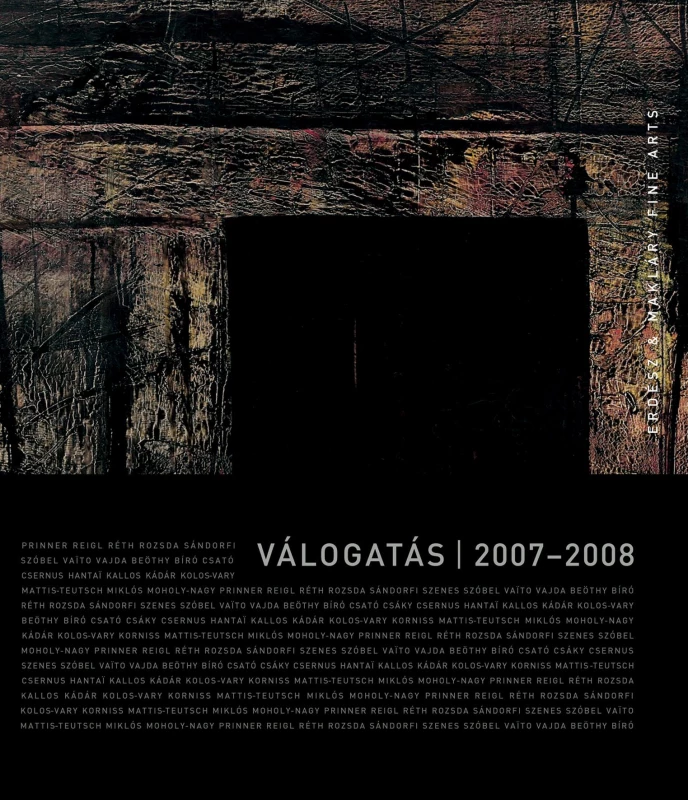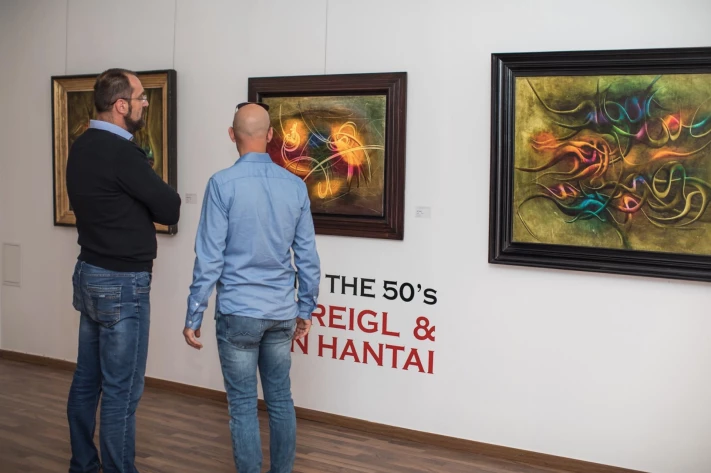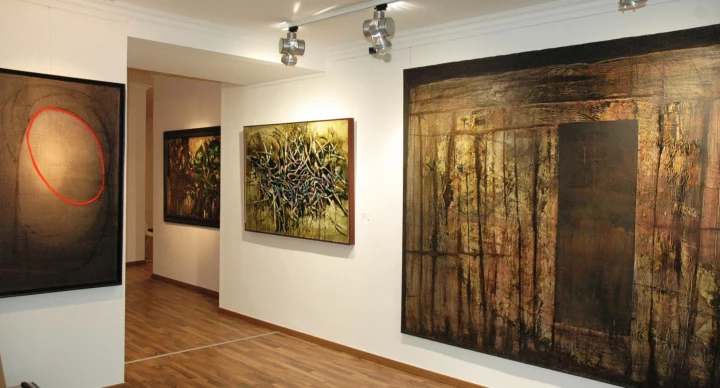Peinture, 1953
oil on canvas, 92 x 123 cm
The order and disorder of organic forms appear also on one of Hantai's surrealistic painting created in iridescent green and blue two (Peinture, 1953). The interlaced and interpenetrating imaginary animals evoke human body parts,
genitals. One can't help but wonder whether it is a depiction of mating, birth or death. Following December 1952, Hantai, who belonged to a group of surrealists in Paris, relocated the Freudian instinct theory, the duality of Eros and Thanatos to a phantasmagorical fauna. As Breton said in his preface prepared to the catalogue of Hantai's first exhibition: „Simon Hantai, just like his namesake, Simon Magus definitely knows 'the shelter which is the origin of all things.'" - Agnes Berecz
Az organikus rendje és rendetlensége Hantai zöld-kék színekben irizáló szürrealista képén (Festmény, 1953) is jelen van. Az egymásba fonódó és hatoló képzeletbeli állatok emberi testrészeket, nemi szerveket idéznek. Vajon párzást vagy harcot látunk, születést vagy halált? Az 1952 december után a párizsi szürrealista csoporthoz tartozó Hantai itt a szürrealista toposszá vált freudi ösztönelméletet, Erósz és Thanatosz kettősségét egy fantazmagórikus állatvilágba helyezte át. Ahogy Breton írta a festő kiállításának bevezetőjében, „Hantai Simon, akárcsak névrokona, Simon mágus, minden bizonnyal jól ismeri a 'hajlékot, amely minden dolgok eredője.'” - Berecz Ágnes













